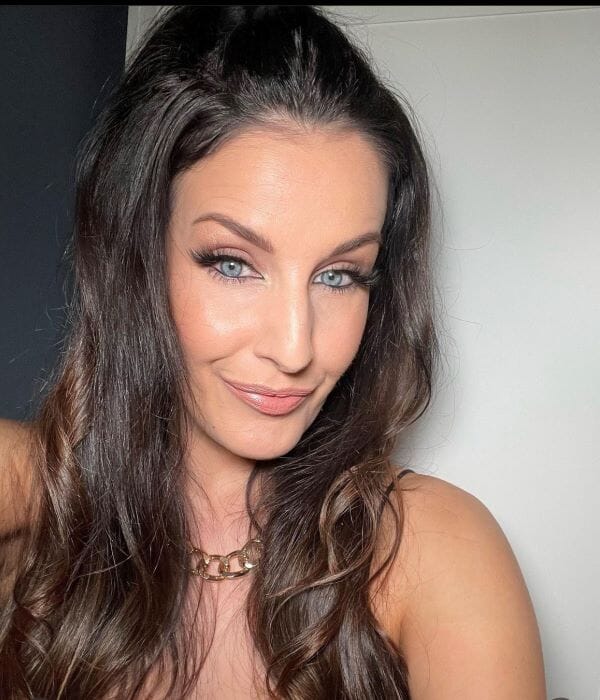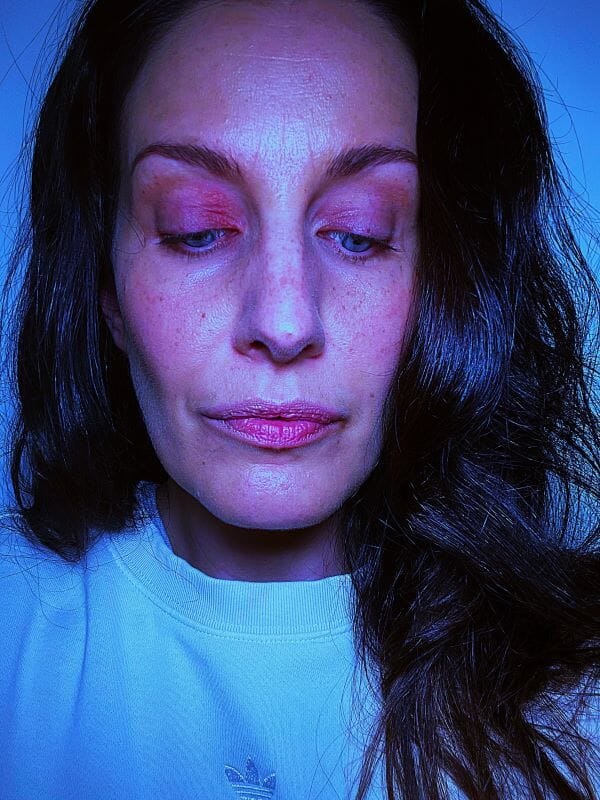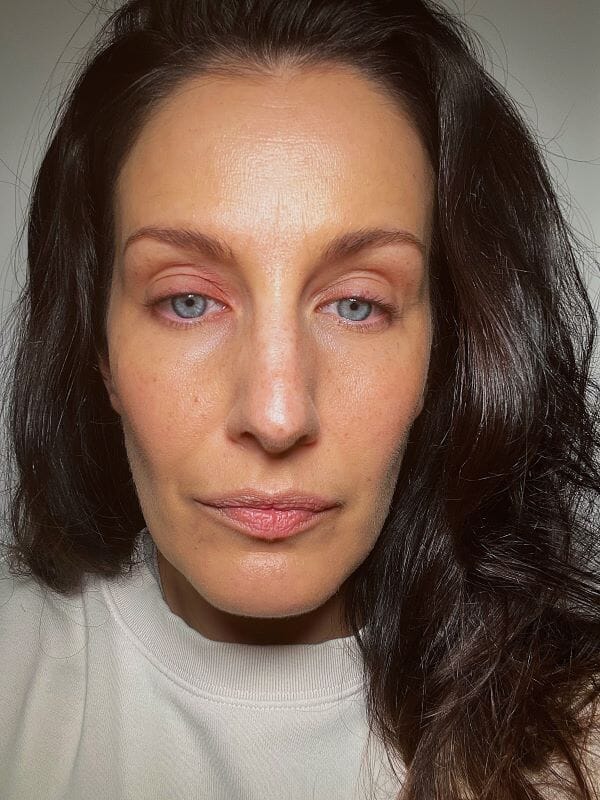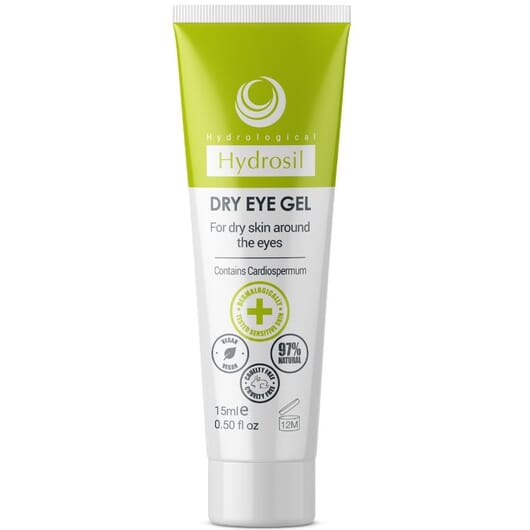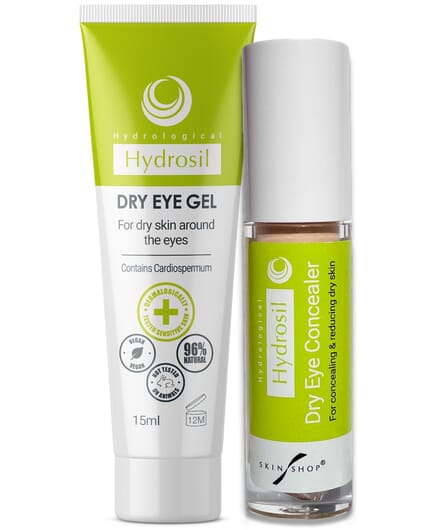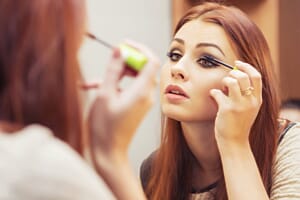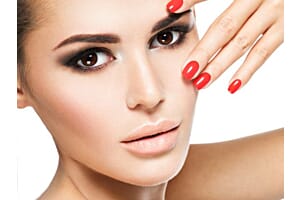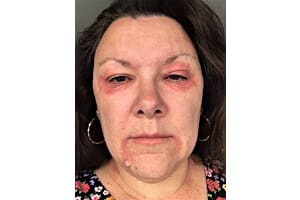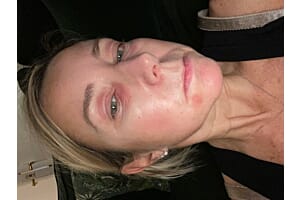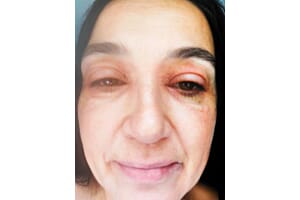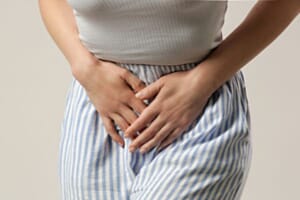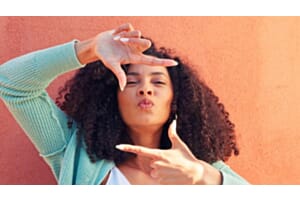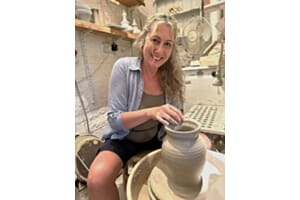1.
Helen Andrew, 37, is a professional make up artist from Surrey.
Helen says;
first developed eye eczema symptoms in 2014 mainly during the winter months and this would be fairly consistent every year until 2020 when it became much worse. Painful styes began appearing on my eyes with an awful dry gritty feeling every time I blinked. Soon came the sore dry scaly patches again on my eyelids which aged my appearance, but the most worrying morning was waking up with extreme swelling to one of my eyes, It looked as though I had been beaten but without the bruising. The severity of these symptoms lasted throughout the entire summer of 2020, wracking my brains wondering if it was related to my hay fever? I cleanse my face thoroughly twice a day, why am I experiencing this issue?
Due to covid I couldn’t see a doctor face to face and trying to diagnose the issue via phone and video call was becoming a challenge as my eyes really needed a closer look. I was eventually given the diagnosis of Blepharitis, with some great advice from my doctor on how this can been managed to subside the symptoms.
There were times throughout 2020 where I could return to work. As a make up artist, working so closely to peoples faces, having sores and styes around my eyes made me feel anxious and worry I’d be judged as “looking” unhygienic. Skin conditions and hygiene play a huge part in make up artistry, if it looks as though I didn’t look after my own skin then would my clients have much confidence in me with theirs? Would they worry they’d catch something from me? Having these symptoms around my eyes made me feel gross and somewhat unprofessional, I would wear glasses just to help disguise the problem. Of course wearing make up would make the problem worse, but my face is an advert for my business. How do I explain to my clients that I’m a professional make up artist but I’m not wearing any make up, without highlighting the problems i am experiencing.
Knowing how delicate the skin was around the eye I was very reluctant to putting steroid creams on it, I tried very small amounts of ezcema creams, i tried antihistamines, I also used a heated eye mask which is great for the styes and dry eye symptoms, along with eye drops. None of these were really making an improvement with the eczema on my eyelids.
During 2020 I had to go to work whilst experiencing severe symptoms, working just inches from peoples faces. I felt anxious that Iwas being judged, I felt unprofessional, on my days off I didn’t want to leave the house, i would frantically search google for natural ways I could treat my symptoms. When I would go out, i would reach for the sunglasses when it wasn’t even sunny just to hide my eyes. And still to this day, when the eczema flares up usually during winter months, I’ll wear glasses to help disguise the problem.
I didn’t feel confident in the job I was doing with my eyes looking how they were. I have had to cancelled social plans during times of flare ups because i the dryness ages me, I don’t feel good about the way I looked.
I discovered Hydrosil Dry Eye Gel when I was searching the internet on natural remedies for eczema on the eyes. I knew using a natural product could be used safely for prolonged periods. I started to feel results instantly, the dry eye gel felt cooling and soothing immediately. I started seeing results within 48hrs and after just 4-5 days the dryness had improved hugely. I didn’t feel aged, my eyes were feeling much more comfortable and my confidence levels improved.
Several months on I have been using the eye gel every day under my make up and so far I have barely had any flare ups. I still get mild itching and irritation but it’s nothing like it was before and barely affects me. I feel like I now have this awful eye condition very much under control which is a godsend for me professionally as well as personally.”
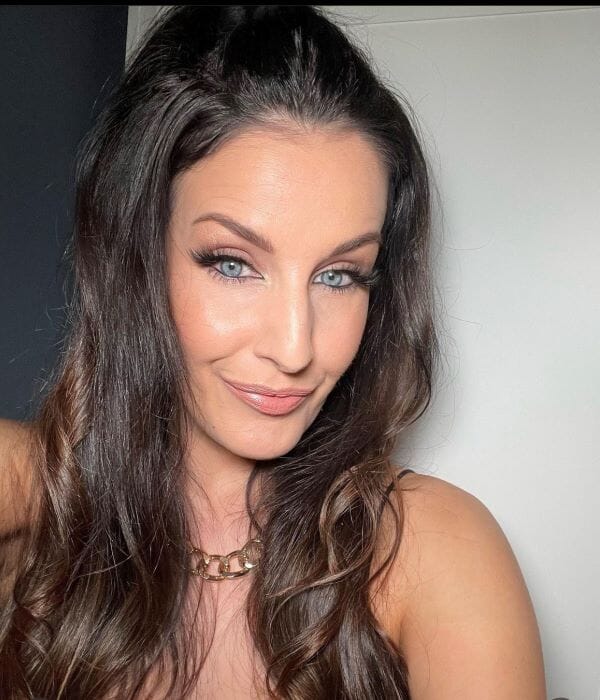
Helen gives 10 tips on how best to manage an eye eczema or blepharitis flare when applying make up
1. As a general rule when having an eczema flare up on my eyes I tend to avoid putting any make up directly onto the irritated skin (ideally I would avoid all make up if and when possible). My flare ups are usually on the eye lid so avoiding eyeshadow where possible and using the Dry Eye Gel alone is key for me, but as a make up artist my face is an advert for my business, so wearing no make up at all is not an option. Here’s a few of my top tips for managing sensitive eyes:
2. Using Hydrosil Dry Eye Gel under make up has been a game changer for me! Just make sure you allow 5-10 minutes for the gel to really absorb into the skin before applying your make up, this will maximise the benefits without moving the gel when applying make up on top.
3. Try to stick to make up products that are described as Hypoallergenic or for use on sensitive skin - these tend to avoid the use of perfumes and allergens which can further irritate sensitive eyes.
4. Avoid make up which contains Talc, perfume and preservatives. These are all common irritants found in make up.
5. A lot of powder eyeshadows can contain Talc, so I would opt for a cream based eyeshadow to help avoid irritation.
6. Where possible during hay fever months use waterproof make up, watery eyes can result in your make up streaming down your cheeks which is a look we all try to avoid but make sure you remove this thoroughly at the end of the day to avoid clogged pores.
7. Waterproof make up is obviously more stubborn to remove and many waterproof make up removers can include harsh chemicals wich could irritate any flare ups on the eyes. I love using natural raw organic coconut oil, it’s safe on the skin, naturally antibacterial and is great at breaking down the products on your skin. I melt a small amount in my hands and massage gently into the skin paying attention to the lash area too, then rinse away with lukewarm water and continue with my cleansing routine (oils can clog the pores so it is important to use a hypoallergenic cleanser afterwards). Try Kalme Cream Cleanser which is water-free, chemical-free and gently removes any make up residue and oils without damaging or irritating senstive skin. The idea is to avoid any harsh rubbing or pulling on the skin or lashes which can cause friction on irritated skin.
8. Clean your eyes and lashes thoroughly! Asides from make up, we touch our eyes throughout the day usually without realising but especially during those hay fever months when rubbing our itchy eyes becomes more common. Our hands touch many surfaces throughout the day, gathering dirt we cannot physically see so daily cleansing is a routine we must get into the habit of doing! Cleaning the root of my lashes twice a day with diluted baby shampoo has hugely helped to keep my symptoms under control, dipping a cotton bud into the solution and running it along my lash line (top and bottom) really helps to remove the build up of bacteria that begins to form on the lashes through the use of make up and the general outdoor elements, pollution and dirt etc. I use one end of a clean cotton bud for each lash line to avoid cross contamination.
9. I use eye drops twice a day (to manage a dry eye condition) but throughout spring/summer I pop these into my bag to help relieve any dry and scratchy symptoms I may experience on the go.
10.I highly recommend to patch test anything new you’re thinking of trying on the skin.



